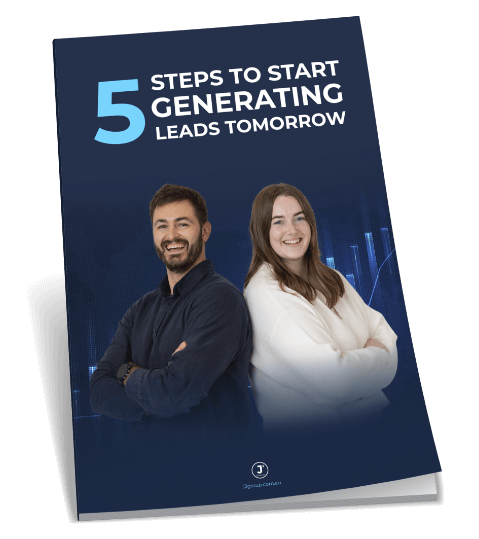As a B2B brand, you want to reach the people who can say “yes” to your product or service. Pitching to people who aren’t decision-makers in a company can lead to multiple back-and-forth exchanges, delays in response and a diluted sense of urgency or value of your product or service.
If you find decision-makers and pitch to them directly, you can skip this runaround and get straight to the point: discussing how your company can help theirs. But identifying these decision-makers isn’t always easy, especially without expensive tools.
Understanding Company Hierarchies Through Digital Footprints
One of the best ways to find decision-makers and company stakeholders is to follow their digital footprints. Aside from keeping an eye out for their updates and posts, platforms like LinkedIn allow you to see the connections between the company’s employees, which can lead you straight to the right person.
Leveraging Company Updates and Posts
In the B2B space, companies often post on platforms like LinkedIn and Twitter, sharing updates, news, or client wins. But more than that, company founders, CEOs, and other decision-makers often share thought leadership posts on the company pages, which makes LinkedIn a goldmine for identifying key players.
Mining Employee Interaction Patterns
Pay attention to how employees interact online. Decision-makers often comment on or share posts from their teams, giving you clues about their roles. This kind of B2B decision-maker research helps you map out hierarchies and pinpoint who holds the power to make decisions.
Advanced Search Techniques for Decision-Maker Discovery
One clever way of mapping out company stakeholders and decision-makers is using the search function on platforms like LinkedIn–which, let’s be honest, is the best free platform you can leverage for your B2B decision-marker research.
Creating Targeted Search Strings
LinkedIn’s search bar is more powerful than you might think. Instead of just typing in a job title, combine it with industry-specific keywords, company names, or even locations. For example, searching for “Head of Marketing at [Company], London” can narrow down your results to the right decision-maker at the company you’re targeting.
Utilising Industry-Specific Keywords
When posting on LinkedIn, many people use hashtags. You can leverage that by searching for industry-specific keywords and hashtags to find posts from people who are actively discussing topics relevant to your industry. Plus, by searching industry-specific keywords, you may also find people who’ve included those terms in their bios, which can lead you down the road to find decision-makers.
Understanding Cross-Platform Validation Methods
Although LinkedIn is the best platform for B2B decision-maker research and connecting with company stakeholders, there are other platforms you can use. Social platforms like Twitter and Facebook are also great places to find decision-makers.
Combining LinkedIn with Other Social Platforms
To strengthen your B2B decision-maker research and make sure you’re targeting the right people, it’s a good idea to combine LinkedIn with other platforms like Twitter, Facebook groups, Slack communities, and industry forums.
Verification Through Company Websites and News
Don’t forget that company websites can also be a contact research method. The “About Us” and “Our Team” sections can reveal the key players at the company. Use this info for organisation chart mapping to understand reporting lines and cross-check with press releases announcing leadership hires or promotions to confirm their current role.
The Mechanics Behind Building Decision Maker Profiles
Before you find decision-makers, you want to define exactly who you’re looking for. The mechanics start with organisation chart mapping to understand a company’s structure.
Identifying Buying Committee Members
In B2B sales, decisions are rarely made by one person. They’re made by a buying committee. You can use LinkedIn to spot job titles tied to purchasing roles, look for employees who engage with relevant posts, and cross-reference all that with other contact research methods.
Mapping Influence Patterns
Look for who interacts with leadership posts or is tagged in company updates. Pair this with contact research methods, like cross-referencing emails and phone numbers, to confirm their authority.
Tips for Strategic Outreach Planning
Your outreach efforts need to be strategically planned and executed. Without a good strategy, you risk wasting your time simply browsing different platforms. Here are some tips to refine your LinkedIn prospecting approach and find decision-makers faster.
Timing Your Connection Requests
Your LinkedIn prospecting needs to be accurately timed. Sending connection requests should align with when decision-makers are active. That said, don’t spend your entire day waiting for them to post on their feeds. Batch-send connection requests when it’s the most convenient for you.
Creating Compelling Initial Messages
Each connection request should come with a personalised message. Decision-makers are receiving a ton of connection requests and messages, so skip the generic initial message. Instead, write why you genuinely want to connect with them.
Find Decision-Makers With Us
Struggling to map decision-makers without premium tools? At J2 Group, we help Australian businesses pinpoint key stakeholders through highly personalised lead generation, LinkedIn research, and managed outreach. If you’re looking for a team of professionals to help you with lead generation, get in touch with us.




